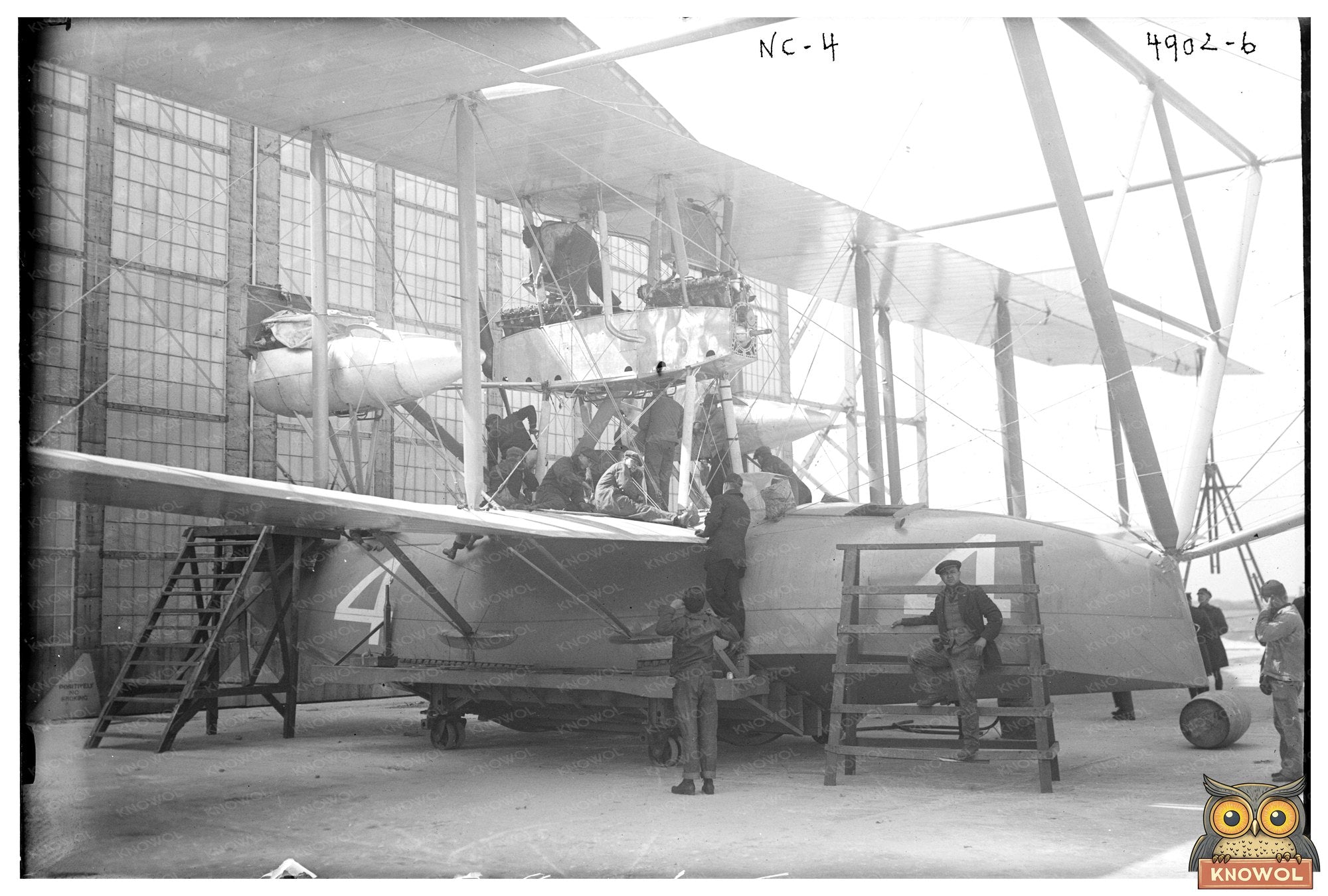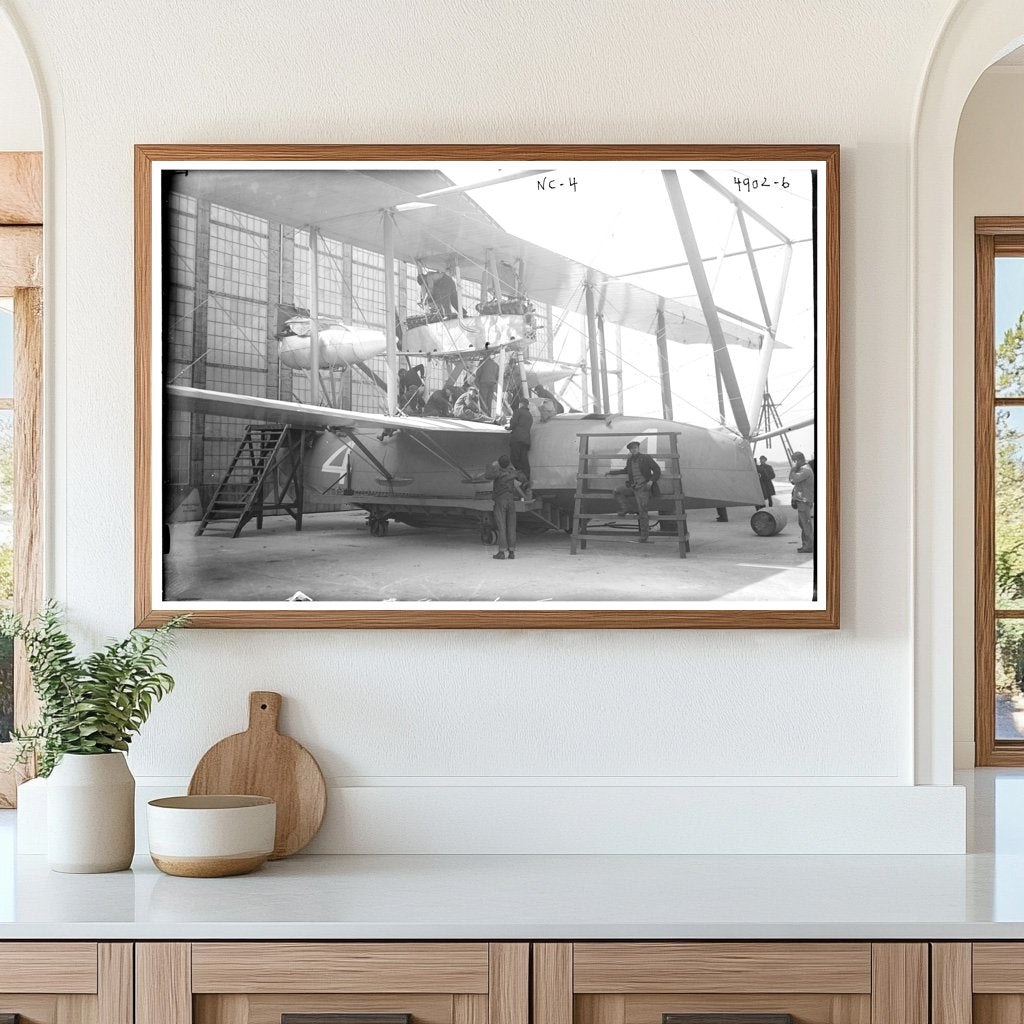


Historic NC-4: First Transatlantic Flight in 1919
The NC-4, flying in 1919, holds a special place in aviation history as the first aircraft to successfully complete a transatlantic flight. Piloted by Lieutenant Commander Albert Read, this U.S. Navy flying boat took off from New York City on May 8, 1919, and landed in Portugal on May 31, after a journey that spanned over 1,500 miles across the Atlantic Ocean. The flight was significant not just for its extraordinary distance but also for demonstrating the potential of military and commercial aviation in the years to come.
This photograph, captured by the Bain News Service, provides a glimpse into the groundbreaking era of flight during the post-World War I period. The NC-4 was part of the Navy’s efforts to explore new aviation technologies, and its journey marked a turning point in air travel, leading to later advances in both civilian and military aviation. The aircraft itself was a Curtiss NC flying boat, designed specifically for long-distance missions, featuring a distinctive biplane structure that combined functionality with the technological innovations of the time.
The successful transatlantic flight of the NC-4 was a bold statement during an age where aviation was still in its infancy. It paved the way for future flights and established new horizons for international travel and military operations. By documenting this pioneering moment, the photograph illustrates not just an achievement in aeronautics but also captures a transformative time in global communication and transportation history.

Historic NC-4: First Transatlantic Flight in 1919
